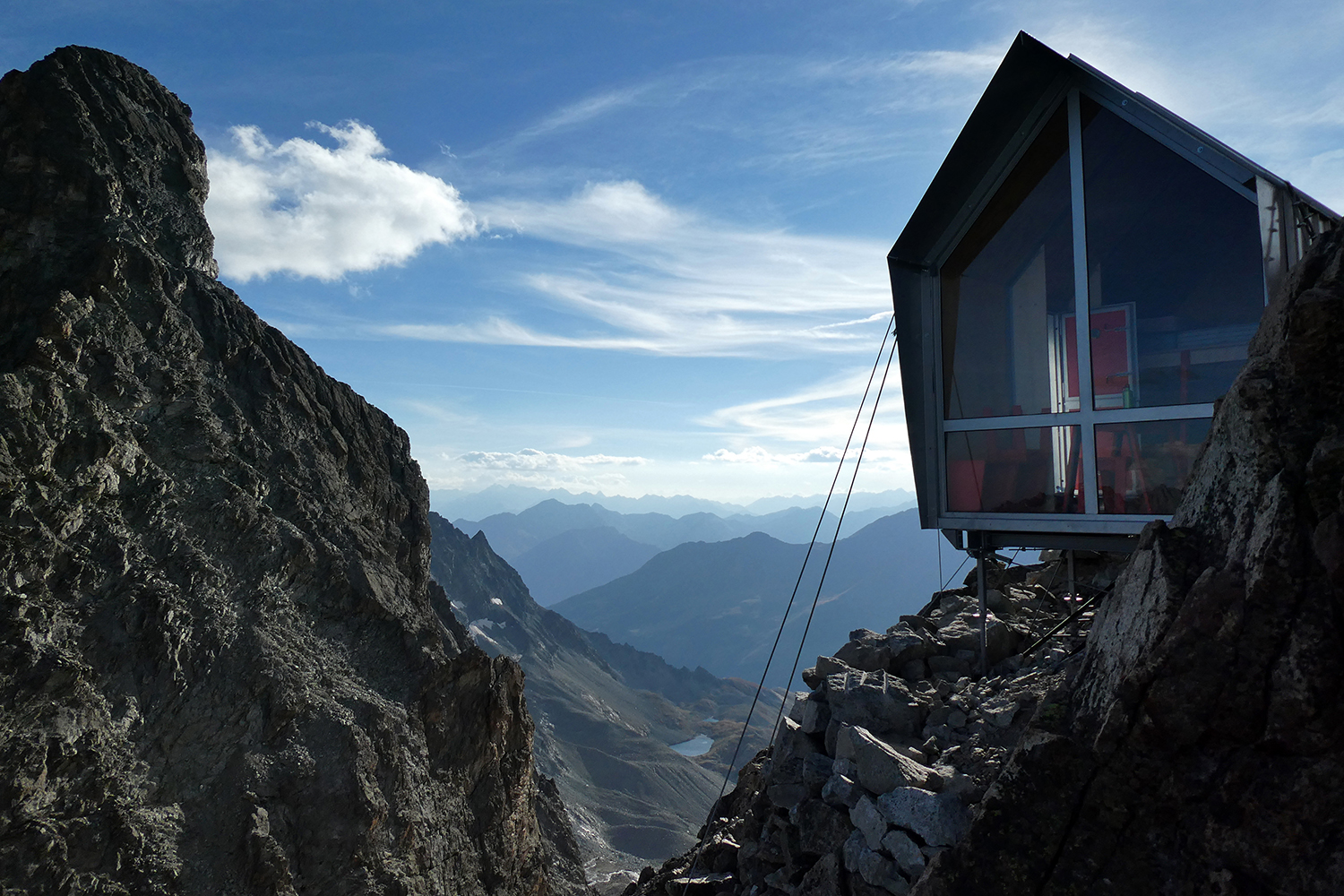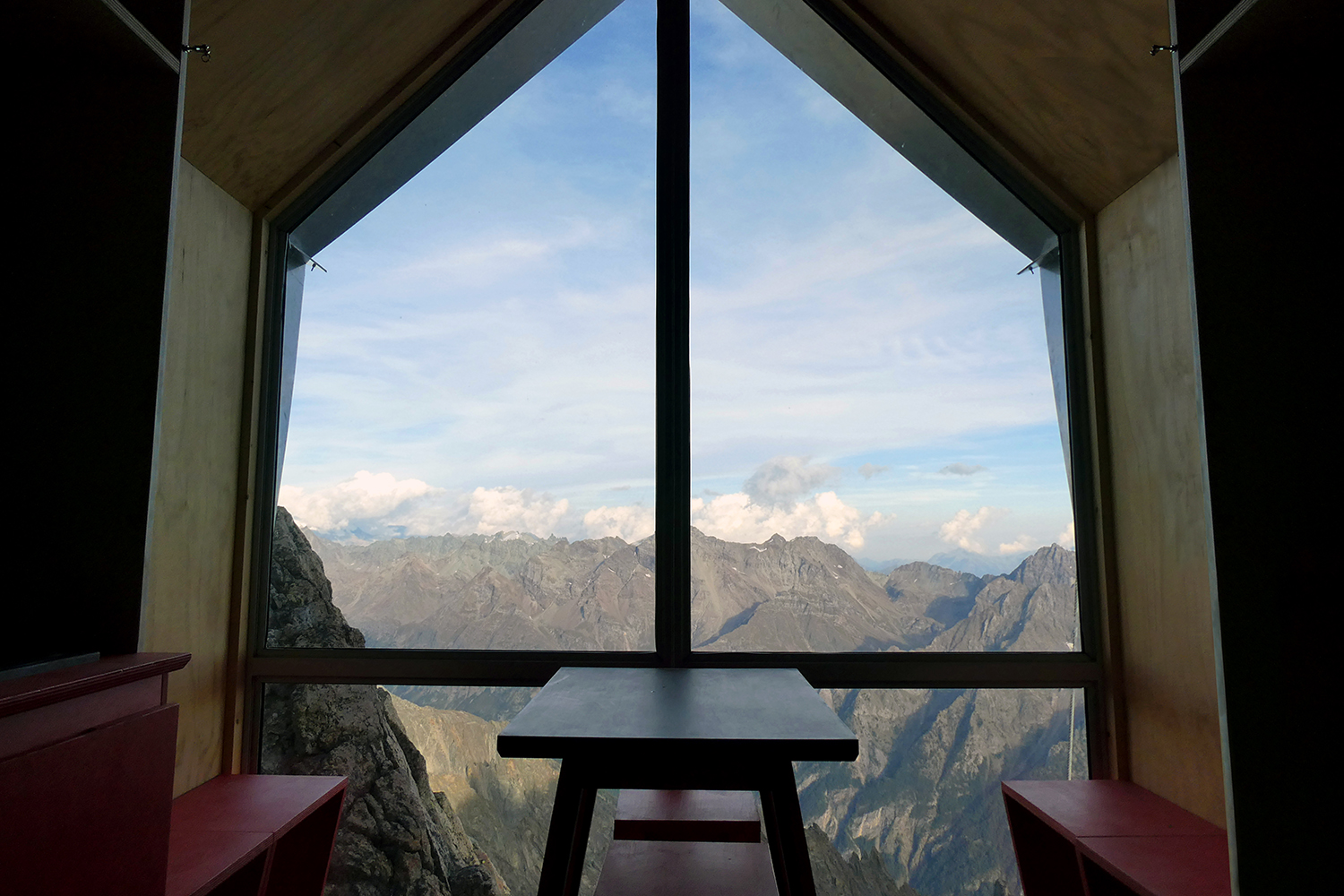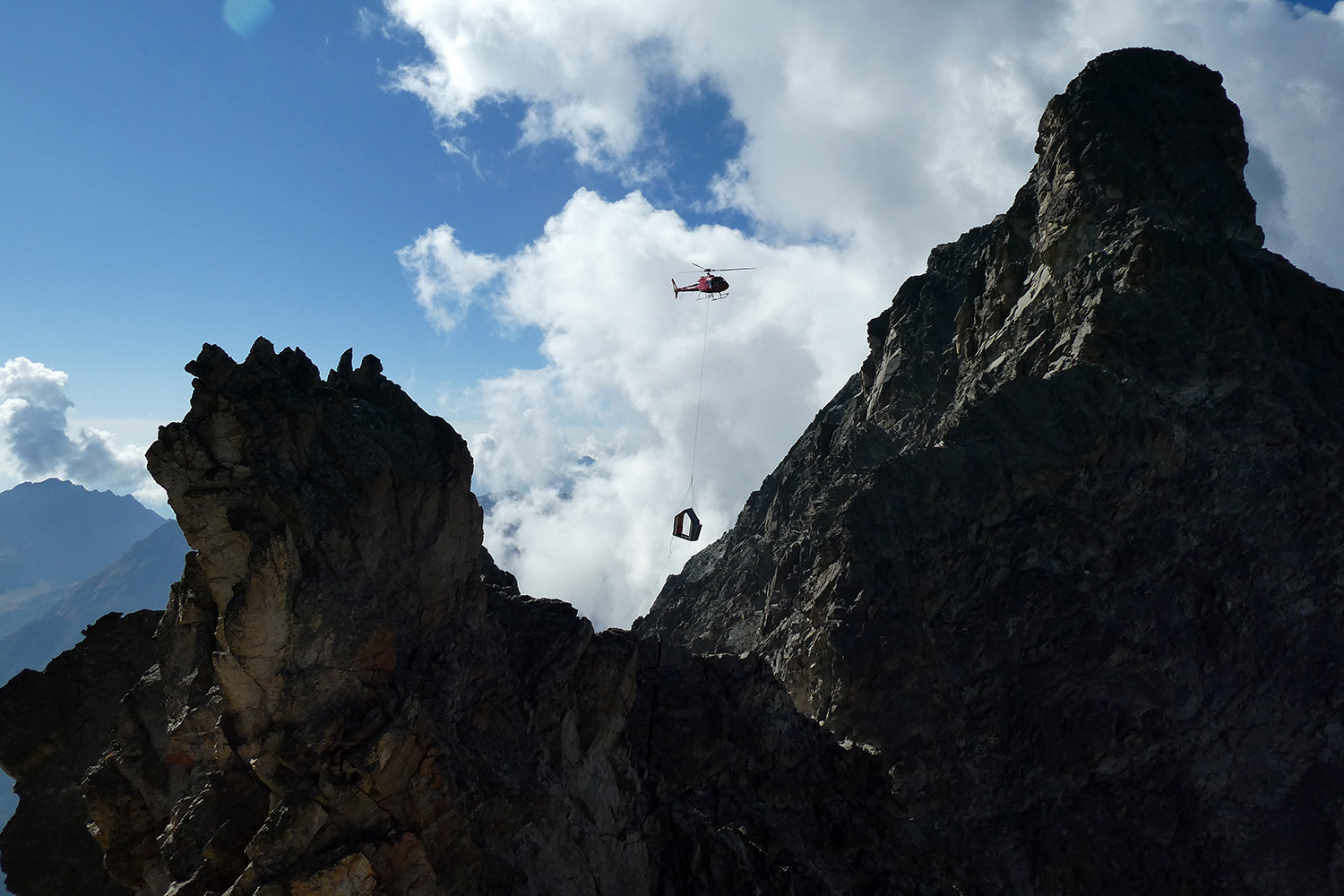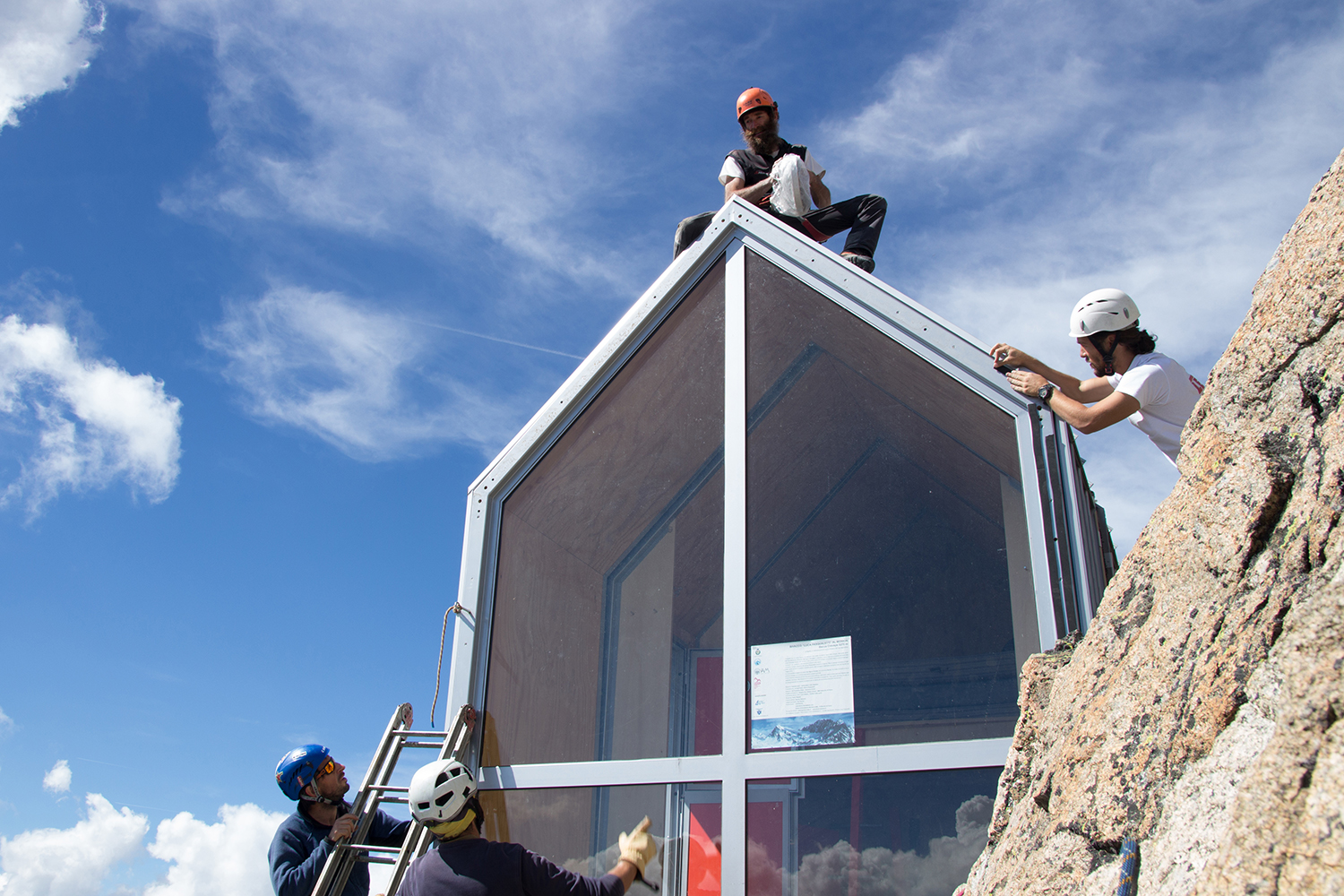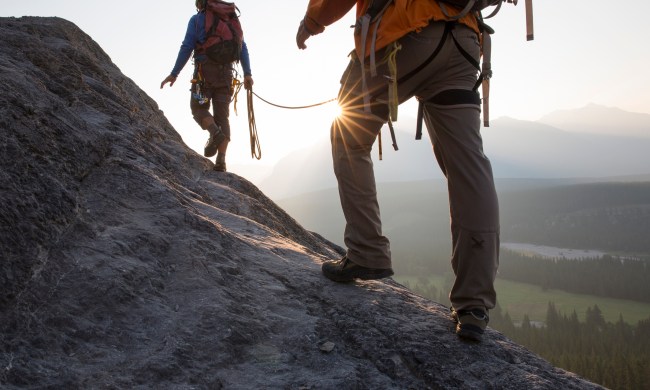Let’s be honest: to the average person, mountain climbing seems insane. However, for the world’s best climbers who thrive on a certain level of adrenalin, scaling a sheer rock wall — often without safety gear or harnesses — is the only thing that gets them out of bed in the morning. A new shelter in the remote Italian Alps is looking to reward extreme climbers with a legit overnight “room” that brings a new level of luxury to the traditional bivouac.

Barely clinging to the rugged Morion Ridge in Italy, the Valpelline Bivouac is an oasis — a slice of modernity and comfort in an otherwise barren, unforgiving landscape. The bones of the prefabricated structure blend steel and wood paneling for a design that’s sleek and modern. A wraparound aluminum covering adds durability and helps protect the bivouac against the elements. The shelter sits at an elevation of more than 10,000 feet where it was helicoptered into place and lightly tethered to the rock to minimize its impact on the surrounding terrain. The sharp, two-pitch design also helps the shelter visually blend in with the craggy landscape.
- 1. Photo by Grzegorz Grodzicki.
- 2. Photo by Grzegorz Grodzicki.
- 3. Photo by Adele Muscolino.
- 4. Photo by Adele Muscolino.
The interior is a sharp contrast to the seemingly lifeless landscape outside. The communal living area features an eight-person table, a food-prep area, and ample space to stow backpacks and other rock climbing gear. An adjacent sleeping area offers two simple wooden platforms with mattresses for up to eight climbers to rest and recharge before resuming their journey. A small solar panel provides just enough power to illuminate the interior after dark. Plus, an east-facing, floor-to-ceiling picture window bookends the space affording guests panoramic views of Monte Rosa, Becca di Luseney, and even the Matterhorn.
The shelter is a dedication to Luca Pasqualetti, a passionate Italian mountain climber and motorcycle racer who died while climbing in 2014. The project is a collaboration of local Espri Sarvadzo alpine guides, the Cantieri d’Alta Quota cultural association, and Luca’s parents.
A complete traverse of the Morion Ridge requires a full two to three days, depending on the skill of the climbers. It’s a challenging, high-altitude trek leaving climbers exposed to the elements and forced to cross a section of glacier and numerous areas with unstable footing. Reaching just the Valpelline Bivouac requires a strenuous six-hour trek from a refuge at Crete Sèche. Climbers are advised to come well-prepared. The best part though is that guests are welcome to stay at the shelter for free.




